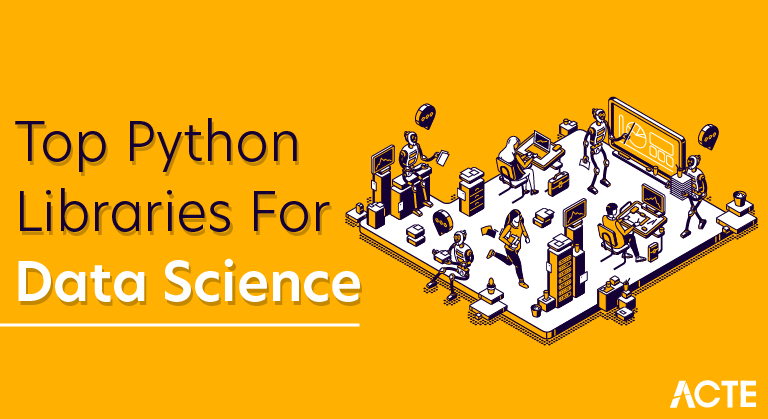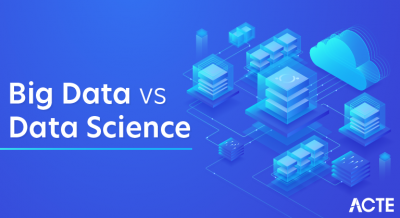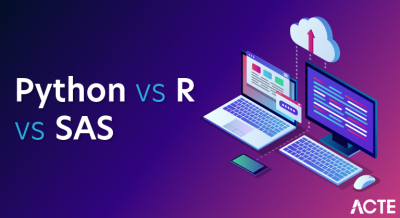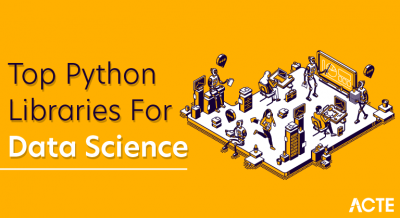
- Python has been a charmer for data scientists for a while now. The more I interact with resources, literature, courses, training, and people in Data Science, proficient knowledge of Python emerges as a good asset to have. Having said that, when I started flourishing my Python skills, I had a list of Python libraries I had to know about. A few moments later…
- People in Data Science definitely know about the Python libraries that can be used in Data Science but when asked in an interview to name them or state its function, we often fumble up or probably not remember more than 5 libraries (it happened with me :/)
- Here today, I have curated a list of 10 Python libraries that helps in Data Science and its periphery, when to use them, what are its significant features and the advantages.
- In this story, I have briefly outlined 10 most useful Python libraries for data scientists and engineers, based on my recent experience and explorations. Read the full story to know about 4 bonus libraries!
1. Pandas
- Pandas is an open-source Python package that provides high-performance, easy-to-use data structures and data analysis tools for the labeled data in Python programming language. Pandas stand for Python Data Analysis Library. Who ever knew that?
- When to use? Pandas is a perfect tool for data wrangling or munging. It is designed for quick and easy data manipulation, reading, aggregation, and visualization.
- Pandas take data in a CSV or TSV file or a SQL database and create a Python object with rows and columns called a data frame. The data frame is very similar to a table in statistical software, say Excel or SPSS.
2. NumPy
- One of the most fundamental packages in Python, NumPy is a general-purpose array-processing package. It provides high-performance multidimensional array objects and tools to work with the arrays. NumPy is an efficient container of generic multi-dimensional data.
- NumPy’s main object is the homogeneous multidimensional array. It is a table of elements or numbers of the same datatype, indexed by a tuple of positive integers. In NumPy, dimensions are called axes and the number of axes is called rank. NumPy’s array class is called ndarray aka array.
- When to use? NumPy is used to process arrays that store values of the same datatype. NumPy facilitates math operations on arrays and their vectorization. This significantly enhances performance and speeds up the execution time correspondingly.
3. SciPy
- The SciPy library is one of the core packages that make up the SciPy stack. Now, there is a difference between SciPy Stack and SciPy, the library. SciPy builds on the NumPy array object and is part of the stack which includes tools like Matplotlib, Pandas, and SymPy with additional tools,
- SciPy library contains modules for efficient mathematical routines as linear algebra, interpolation, optimization, integration, and statistics. The main functionality of the SciPy library is built upon NumPy and its arrays. SciPy makes significant use of NumPy.
4. Matplotlib
- This is undoubtedly my favorite and a quintessential Python library. You can create stories with the data visualized with Matplotlib. Another library from the SciPy Stack, Matplotlib plots 2D figures.
- When to use? Matplotlib is the plotting library for Python that provides an object-oriented API for embedding plots into applications. It is a close resemblance to MATLAB embedded in Python programming language.
5. Seaborn
- So when you read the official documentation on Seaborn, it is defined as the data visualization library based on Matplotlib that provides a high-level interface for drawing attractive and informative statistical graphics. Putting it simply, seaborn is an extension of Matplotlib with advanced features.
- So, what is the difference between Matplotlib and Seaborn? Matplotlib is used for basic plotting; bars, pies, lines, scatter plots and stuff whereas, seaborn provides a variety of visualization patterns with less complex and fewer syntax.
6. Scikit Learn
- Introduced to the world as a Google Summer of Code project, Scikit Learn is a robust machine learning library for Python. It features ML algorithms like SVMs, random forests, k-means clustering, spectral clustering, mean shift, cross-validation and more… Even NumPy, SciPy and related scientific operations are supported by Scikit Learn with Scikit Learn being a part of the SciPy Stack.
- When to use? Scikit-learn provides a range of supervised and unsupervised learning algorithms via a consistent interface in Python. Supervised learning models like Naive Bayes to grouping unlabeled data such as KMeans, Scikit learn would be your go-to.
7. TensorFlow
- Back in 2017, I received a TensorFlow USB as an appreciation for being an amazing speaker at a Google WTM event, haha. The USB was loaded with official documentation of TensorFlow. With no clue at that point of what TensorFlow was, I Googled it.
- TensorFlow is an AI library that helps developers to create large-scale neural networks with many layers using data flow graphs. TensorFlow also facilitates the building of Deep Learning models, push the state-of-the-art in ML/AI and allow easy deploy of ML-powered applications.
- One of the most developed websites amongst all libraries is of TensorFlow. Giants like Google, Coca-Cola, Airbnb, Twitter, Intel, DeepMind, everyone uses TensorFlow!
- When to Use? TensorFlow is quite efficient when it comes to classification, perception, understanding, discovering, predicting, and creating data.
8. Keras
- Keras is TensorFlow’s high-level API for building and training Deep Neural Network code. It is an open-source neural network library in Python. With Keras, statistical modeling, working with images and text is a lot easier with simplified coding for deep learning.
9. Statsmodels
- When I first learned R, conducting statistical tests, and statistical data exploration seemed the easiest in R and avoided Python for statistical analysis until I explored Statsmodels or Python.
Data Science Sample Resumes! Download & Edit, Get Noticed by Top Employers!
Download
10. Plotly
- Plotly is a quintessential graph plotting library for Python. Users can import, copy, paste, or stream data that is to be analyzed and visualized. Plotly offers a sandboxed Python(Something where you can run a Python that is limited in what it can do) Now I’ve had a hard time understanding what sandboxing is but I know for a fact that Plotly makes it easy!





